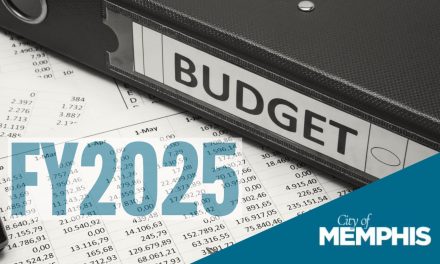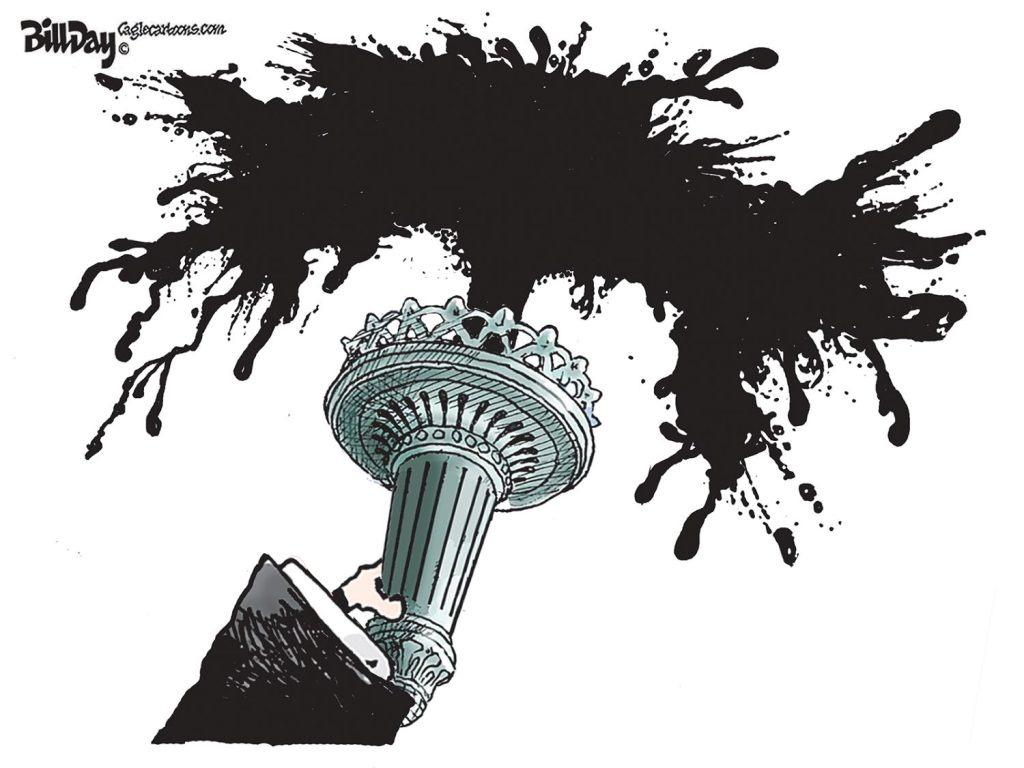Despite protests to the contrary, the Memphis firefighters union’s statement connecting tax freezes and city budgets (in its case, pension funding) was not an illogical connection to make.
After all, anytime you take money off the table, there is naturally less to spend on city services. It’s regularly amazing how little conversation there is during city and county budget hearings about the roughly $100 million in property taxes being given up every year in the form of business incentives for large companies and developer incentives downtown and about whether the PILOT (payment-in-lieu-of-taxes) programs can be fine-tuned to make them more of a true incentive than an entitlement.
Memphis Fire Fighters Association President Thomas Malone, in stating that City of Memphis could have avoided cuts to retirees’ health care benefits if there were not PILOTs (payment-in-lieu-of-taxes), may have been stretching the mathematical reality, and while PILOTs have certainly not helped local government’s financial bind, they’re hardly the sole – or even the primary – source of the budgetary problems.
Mr. Malone leaned heavily on a recent report by Good Jobs First, an organization headed by Greg LeRoy, whom we respect for his untiring advocacy for economic development subsidies that are more accountable and effective. We have posted and referred to some of his organization’s work, particularly Subsidy Tracker, a comprehensive data base of business incentives and sounding the alarm about their overuse.
Finding the Right Balance
As for us, we’ve written since the earliest days of this blog nine years ago about the fallacies baked into our PILOT process and the failure to seek a better balance in their use. While we’re not one of the “totally eliminate them” camp, we are definitely in the “reform them and use them strategically” group.
Like Good Jobs First, we agree that the justifications for the tax freezes are often tenuous and incomplete. In addition, the Memphis rules for PILOTs mean that our largest corporations may never pay property taxes while the tax burden for their public services are shifted to homeowners and small business owners.
Certainly, one of the vital services on which these companies rely is fire protection. As we have said before, if cost-benefit analyses are going to be used to validate the waiver of taxes, they should factor in the costs of public services like fire protection that companies need but which they will not be supporting with their taxes.
That said, it’s easy to argue that the cost-benefit analyses should be eliminated altogether. Few people on either side of the PILOT debate truly believe them, and that’s in keeping with the reason they originated in the first place – to provide some thin veneer of justification for a tax freeze in the political arena.
They purport to demonstrate that for each of the PILOTs approved, there is a high rate of return in the form of revenues for local government. And yet, because there is no attempt to determine if a company really needs the tax freeze or whether it’s just lagniappe that they are applying for because they know they can get it, the local government revenues produced by new jobs and construction are treated as reason enough to approve a tax freeze. Of course, if the company did not require the tax freeze to close its deal, city and county government would have gotten the revenues anyway…plus property taxes.
Sticking to the Facts
All that said, the Good Jobs First report from last week fumbled its opportunity to be specifically relevant because of some factual errors and by applying favored polemical points – particularly about large-scale projects like sports arenas – without understanding how in Memphis these projects were structured precisely to reduce, if not eliminate, public risk.
The report’s favorite targets in this area were FedExForum, AutoZone Park, and The Pyramid redevelopment, implying they are responsible for huge increases in the city’s debt, or in the words of the report’s title, “sapping the City’s fiscal strength.” That this is precisely not the case does little to deter the report’s conclusions or to generate congratulations to City of Memphis for its ability to develop innovative funding structures to pay for its marquee projects without increasing the city bonded indebtedness.
For example, in these three projects – with total costs of $390 million – the City of Memphis put in a grand total of about $16.5 million. More to the point, the bonds for FedExForum are being paid off ahead of schedule from its array of revenue sources, including the primary ones that are derived from spending by basketball fans and concertgoers. Meanwhile, the $75 million for the redevelopment of The Pyramid (that’s the cost, not the $197 million listed in the report) does not have any funding from the city general fund, and finally, the City of Memphis bought AutoZone Park at a bargain and its bonds are being paid mostly from the revenues from fans there.
In other words, these projects are not resulting in a huge increase in the city’s debt, because the bonds are essentially being paid for with revenues from the projects themselves. Or put another way, the only bonds being paid by city taxes are the about $16.5 million issued more than a decade ago. More to the point, none of the other $373.5 million of the projects’ costs are even city debt.
Not Transferrable
In addition, Good Jobs First said its conclusions are “consistent with the academic consensus that sports venues do not create net new economic activity but instead simply move a finite amount of leisure time dollars around…” Actually, in Memphis, before FedExForum was built, Shelby County Government commissioned a study by University of Memphis academicians on this precise point, and it quantified definitively the new spending that would in fact be created by FedExForum.
As for AutoZone Park, contrary to the report, city and county government did not purchase the land for the ballpark as a “subsidy for a group of investors.” Rather, Memphis and Shelby County Government purchased the land in a unique arrangement in which a nonprofit organization became owner of the team and the ballpark. The innovative structure received significant national media coverage, but ultimately, about 15 years later, the nonprofit group could not operate at a profit. Rather than let the ballpark go dark and create negative news stories that would have rivaled the ones when the Peabody Hotel closed in 1973 and downtown was pronounced officially dead, City of Memphis stepped up to take ownership of the ballpark.
Finally, it’s worth stating that even if The Pyramid was not being redeveloped (one of the only former arenas in the U.S. converted into a use creating jobs and revenues), and even if FedExForum and AutoZone Park had never been built, there would be no more money to pay for city services and pensions because the sources of funds for these projects cannot be spent for any purpose.
That’s why Good Jobs First is patently wrong when it wrote: “All the public resources spent backing risky sports stadium deals and retail redevelopments have an impact on Memphis’ budget and economy. They siphon away revenues that could be spent on public services, education, or infrastructure.”
Sticking to the Facts
We mention this because there is already confusion that stems from union leaders making incendiary statements that treat operating funds and capital funds as the same thing, and from suggesting that money for The Pyramid, for example, could be spent for pensions or neighborhood services. That’s not the case and it’s not possible, and it is crucial in today’s volatile environment to trade in the precise facts.
The debate about PILOTs is clearly going to be heightened in the coming weeks as EDGE presents its review of the PILOT program with the promise of improvements of the tax waiver process, hopefully in ways that ensure that they are wise investments, that they deliver the returns promised when the companies receive them, and that they are actually needed to close the deal since survey after survey indicates that tax incentives are secondary in business location decisions.





Few questions:
1) What are your sources used for rebutting the Good Jobs Report?
2) What is the logical alternative to securing pension and healthcare premiums city employees had before?
What do we have to prove the figures? Especially how many Memphis residents who are hired for projects funded by PILOTS? When I see a lot of Mississippi license plates, I can’t help but wonder.
Kirstin: 1) The sources for the city projects are the financing documents for each project. 2) The main alternatives for city funds for any purpose, including pensions and health benefits, are essentially tax increases, budget cuts, new fees, and/or fewer PILOTs. Is that answering your question?
Sue: We’re not sure which figures you’re referring to. We think that the report is right on the PILOTs. It just missed the mark on the nuances of financing connected to the major city projects. I heard someone in North Mississippi recently complain because so many Memphians are working at companies they recruited there, so the fluidity of labor is a reality of a regional economy. That said, if the boards providing PILOTs wanted to limit employees to Memphis residents only, they could do so, but I am sure they would resist this as an obstacle that would discourage companies from coming here.
Kristin,
I will try to answer your questions.
1) I believe that logic was used to rebut Good Jobs Report.
2) There is no “logical alternative to securing pension and healthcare premiums city employees had before”, unless the City can find the same coverage from other pension and healthcare systems.
“Finally, it’s worth stating that even if The Pyramid was not being redeveloped (one of the only former arenas in the U.S. converted into a use creating jobs and revenues), and even if FedExForum and AutoZone Park had never been built, there would be no more money to pay for city services and pensions because the sources of funds for these projects cannot be spent for any purpose”.
It is such a basic point that it baffles the mind as to how the Good Jobs First report managed to be penned in the first place. You would assume the authors, whatever their intent, would go to extra lengths to fully understand how such projects were financed. How can anyone trust the conclusions published in a report when such basic examples and references are incorrect or do not support the conclusion drawn?
Why has the pension been under funded for so many years? Where has the money gone that was supposed to fund it?
Rachel: Good question. I don’t know why the total annual payments weren’t made, unless in the wake of the recession, all city revenues were down and higher priority was put on services in neighborhoods and public safety. For example, during that time, the police department got more money to hire more officers. Also, I need to look it up but I am fairly certain that the amount needed to pay off bond debt increased.
SCM and Rachel- I wanted to clarify for myself and perhaps others that when the timeframe “so many years” is employed that we are talking about a period of time beginning when the full damage inflicted by the recession was ascertained (2009-2010) until the present day. Is that correct?
I have heard the distinction between capital and operating funds pointed out multiple times and rightly so. However, don’t the bonds we sell for capital funds hit future operating funds for many years? I believe I have heard the rule of thumb that every $1 million in bonds costs $80k per year for many years to come.
So, while it is true that capital funds spent this year can’t be used for operating funds this year, the capital funds spent this year do, in actuality, deplete operating funds in years to come.
Is my understanding incorrect?
Mark:
You are correct. Most public bonds around here are for 20 years so the bond payments would be for that period of time. We don’t think we’ve said anything to the contrary.
What we’ve complained about are people who conflate operating and capital numbers as if they are one and the same. So when a union official says, as he did recently, that the city should have taken the $25 million for Autozone Park and spent it for pensions, there’s not really $25 million to be reallocated. If it were a city general obligation bond, it would probably be roughly $1.7 million a year. If Autozone Park bonds had been paid with property taxes, there would be $1.7 million or so that could be spent on other things, but not $25 million.
However, in the case of Autozone Park, the debt service is about $2M a year (these were revenue bonds so the payments were higher than regular city G.O. bonds). More to the point, this money couldn’t be shifted to other purposes anyway since they were produced by the ballpark and can only be used for the ballpark.
Urbanut: You are right about “so many years.” Until the Great Recession, City of Memphis was making optimal pension payments.